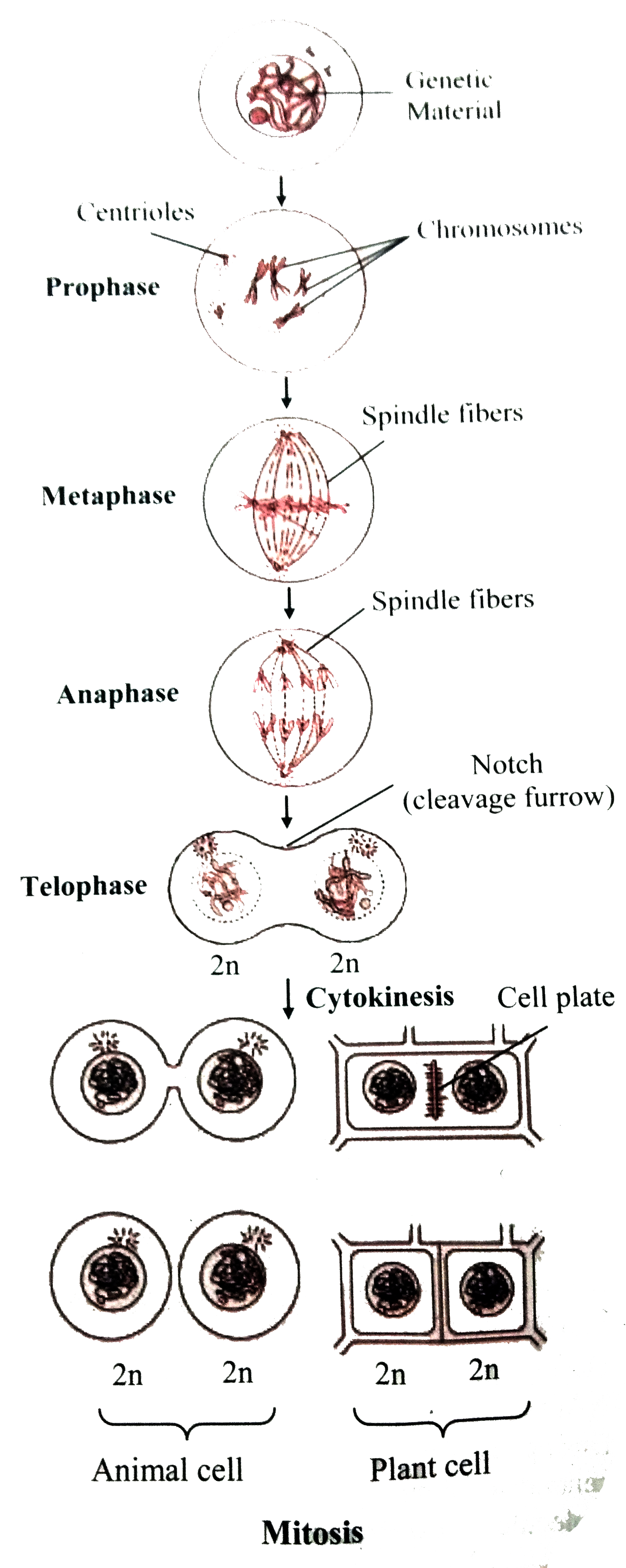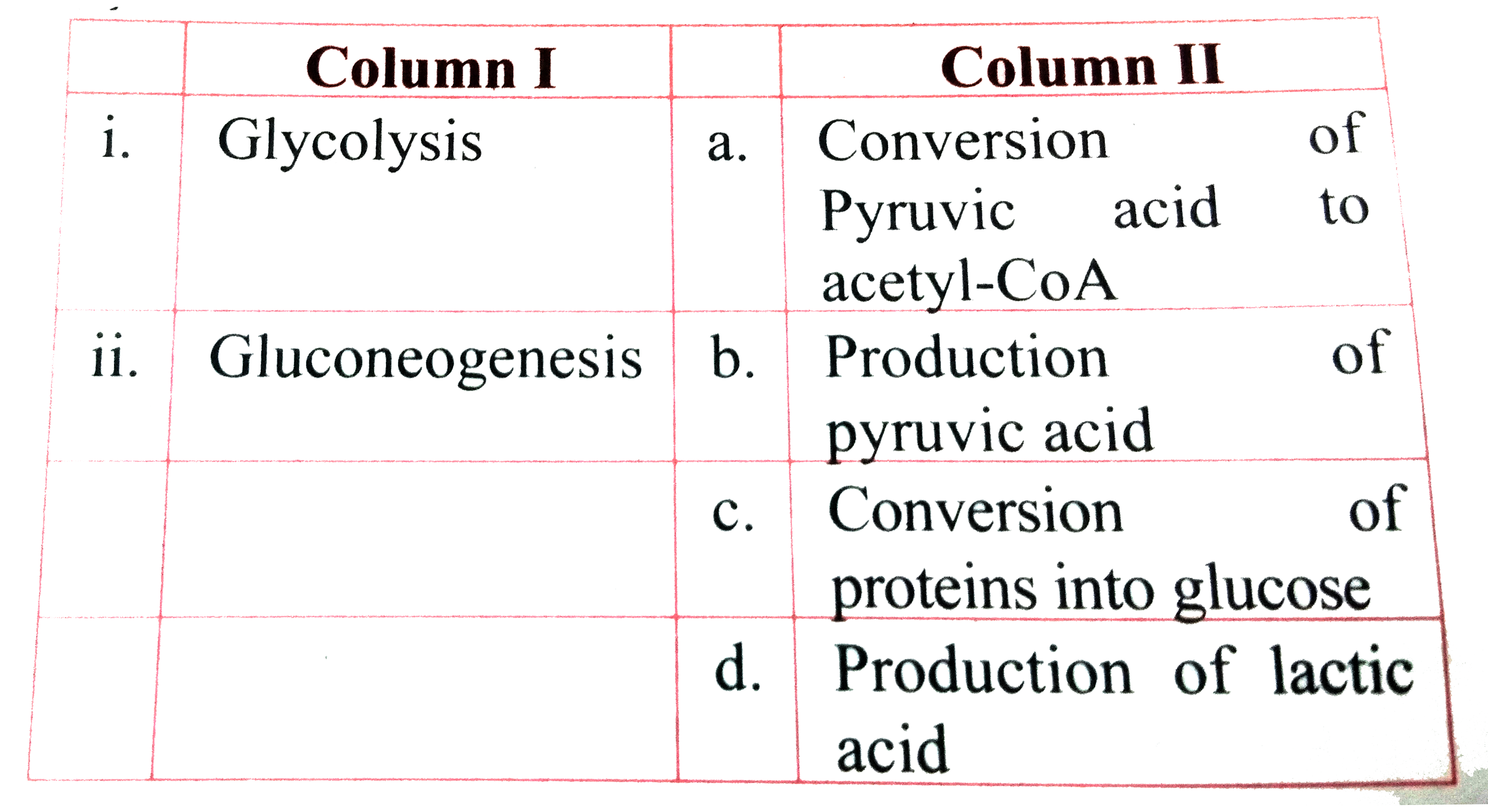Answer in detail:
With the help of suitable diagrams explain the mitosis in detail.Solution in Marathi
i. Mitosis is the process of cell division occurring in somatic cells and stem cells. It is essential for the growth of the body, restoration of emaciated ( weak and itll ) body, wound healing, formation of blood cells, etc.
ii. It is completed through two main steps namely, karyokinesis ( nuclear division) and cytokinesis ( cytoplasmic division ) .
iii. Karyokinesis occurs via. four steps, i.e., prophase, metaphase, anaphase and telophase.
a. Prophase : During this phase thread like chromosomes condense. The centrioles duplicate and move to the opposite poles of the cells. The nuclear membrane and nucleolus starrt disappearing.
b. Metaphase : During metaphase, the nuclear membrane completely disappears . Chromosomers complete condensation and become clearly visible along with sister chromatids. The chromosomes arrange parallel tothe equatorial plane of the cell. Spindle fibers are formed between the centromers of each chromosome and both the centrioles respectively.
c. Anaphase : The centromeres split and the sister chromatids are pulled apart in opposite directions with the help of spindle fibers. The separated sister chromatids ( daughter chromosomes ) reach two opposite poles of the cells.
d. Telophase : Daughter chromosomes begin to decondense and the nuclear membrane is reformed around each set of chromosomes present at the poles . This results in the formation of two daughter nuclei. The nucleolus reappears in each daughter nucleus and the spindle fibers disappear completely.
iv. With the end of karyokinesis, cytokinesis begins and as a result two new daughter cells are formed.
v. During cytokinesis, a notch ( cleavage furrow ) forms at the equatorial plane that gradually deepens to form two separate cells. A cell plate is formed in the center of the cell instead of notch in case of plant cells.

Topper's Solved these Questions
- BOOK - TARGET PUBLICATIONCHAPTER - LIFE PROCESSES IN LIVING ORGANISMS PART - 1 EXERCISE - GIVE REASON6videos
LIFE PROCESSES IN LIVING ORGANISMS PART - 1
- BOOK - TARGET PUBLICATIONCHAPTER - LIFE PROCESSES IN LIVING ORGANISMS PART - 1 EXERCISE - DISTINGUISH BETWEEN4videos
LIFE PROCESSES IN LIVING ORGANISMS PART - 1
- BOOK - TARGET PUBLICATIONCHAPTER - LIFE PROCESSES IN LIVING ORGANISMS PART - 1 EXERCISE - MATCH THE FOLLOWING5videos
LIFE PROCESSES IN LIVING ORGANISMS PART - 1
- BOOK - TARGET PUBLICATIONCHAPTER - LIFE PROCESSES IN LIVING ORGANISM PART-2EXERCISE - GIVE SCIENTIFIC REASONS4videos
LIFE PROCESSES IN LIVING ORGANISM PART-2
Similar Questions
Kreb's cycle is also known as citric acid cycle.
View SolutionDistinguish between
Glycolysis and TCA cycleView SolutionMatch the following columns
 View Solution
View SolutionChildren born to older women may commonly have birth defects.
11:26View SolutionWith the help of suitasble diagrams, explain in mitosis in detail.
View SolutionWith the help of suitable diagrams, explain mitosis in detail.
10:36View SolutionWith the help of suitable diagrams explain the mitosis in detail.
11:40View SolutionWith the help of suitable diagrams explain the mitosis in detail.
08:24View SolutionExplain the substitution reaction in detail with suitables examples .
08:54View SolutionDescribe various phases of mitosis in detail with diagram.
04:15View SolutionExplain the development of dicot embryo giving suitable example.
06:33View SolutionAnswer in detail: With the help of suitable diagrams explain the mitosis in detail.
02:41View SolutionAnswer in detail: Explain glycolysis and Kreb's cycle in detail.
03:18View SolutionExplain in details, the process of karyokinesis occurring during mitosis.
View SolutionWith the help of suitable diagrams explain the detailed ultrastructure of a mitochondrion. How would you justify that mitochondria are genetically autonomous or atleast semiautonomous?
05:10View SolutionHow t-RNA acts as an adapter molecule? Explain in detail with the help of a diagram.
08:49View Solution

